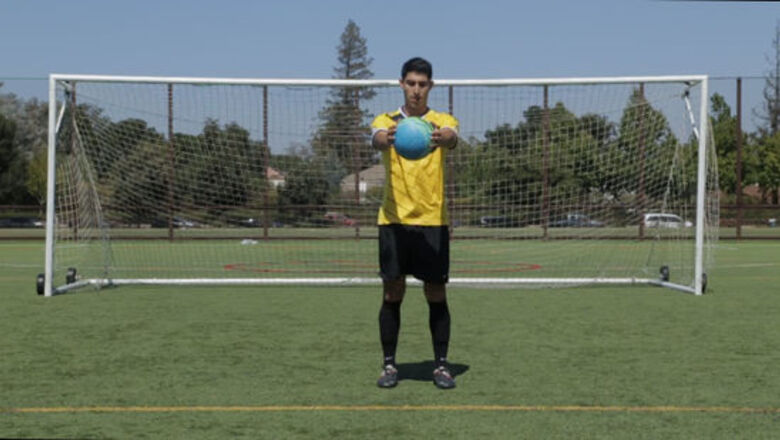
views
Starting with the Ball in Your Hands
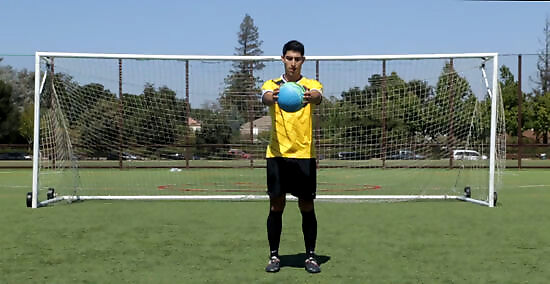
Hold the ball straight out in front of you so that it is at the height of your chest. Drop it and let it bounce. As the ball begins to descend after this bounce, kick it back up into the air. Try to kick it with your dominant foot hard enough that it reaches chest height. Try to kick the ball with your foot angled slightly upward. Make sure to kick the ball with your laces. Make sure that your laces are not double knotted at first. The ball may bounce off of your laces at a weird angle if your laces are tied in a large knot. If you deflate the soccer ball a little bit, you will reduce the intensity of its bounce. The ball will be easier to control and won’t go flying every time you miss a kick. Once you’ve mastered the technique of juggling, you should fully inflate your ball. Keep your ankle 'locked' so that it stays angled and strong. A wobbly ankle leads to a wobbly kick.
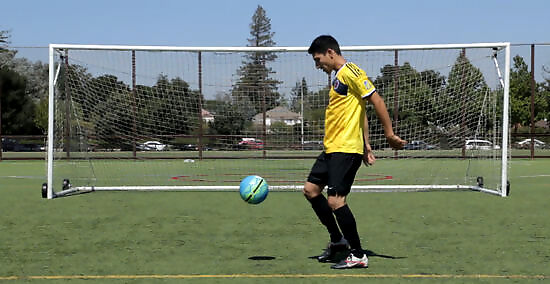
Keep your knees slightly bent. Doing this will help you have better control over the ball. Do not lock your knees. Keep the foot you are not kicking with (your controlling foot) flat and firmly planted on the ground. It is important to be balanced while juggling the ball. In between touches, it is risky but useful to try to re-balance yourself such that you can maintain control of how you hit the ball each time. Always try to stay balanced on your toes, ready to make quick movements. The biggest key to balancing is to keep your knees bent and your eyes on the ball.
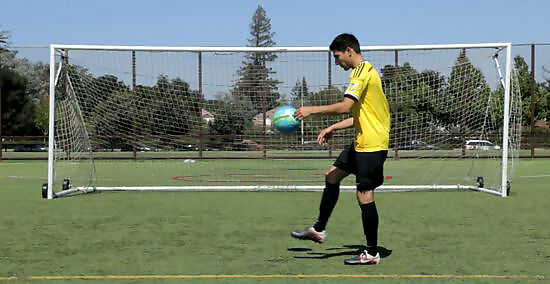
Practice until you can easily and consistently catch the ball in front of your stomach. You should not have to lean or reach to catch the ball. Then do the same with your other foot. Keep in mind that juggling with your non-dominant foot will be harder. Keep at it!
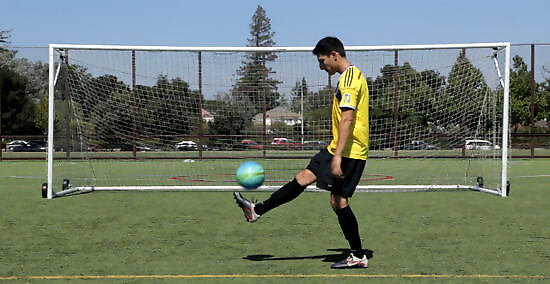
Increase the number of times you let the ball bounce off your feet. Instead of catching the ball every time you kick it, kick it up into the air and as it falls, kick it up again rather than letting it bounce on the ground. Try to keep the ball under control. Focus on juggling with one foot until you feel confident, then switch to the other foot. Practice until you feel confident juggling with both feet. You can "catch" the ball on your foot with careful practice by cushioning the fall of the ball and holding it in place with your foot and shin.
Alternating Feet
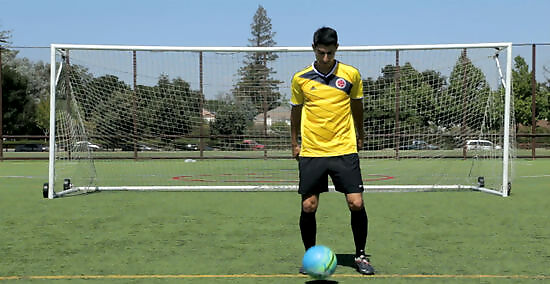
Drop the ball and let it bounce. Kick it up with your right foot. Try to keep the kick controlled and aim to kick the ball straight up in the air. Try to kick it no higher than your waist.
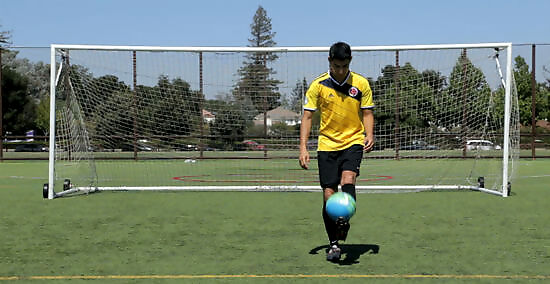
Let the ball drop and then kick it up with your left foot. Again, try to keep your kick light and controlled so that the ball only goes up to your waist. Smaller kicks are easier to control and better for learning how to alternate feet. Be prepared for the fact that you will probably move around a lot while you learn how to alternate feet.
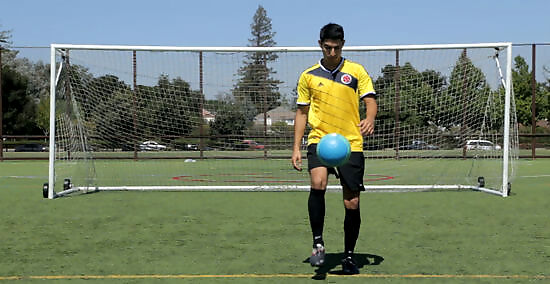
Catch the ball once you have kicked it once with both feet. Readjust if you have moved around and then drop the ball again. When you have kicked the ball with both feet twice, catch the ball. Then try kicking it three times with both feet, then four times, etc. You'll have mastered this step when you can stand in one place and keep juggling the ball between your feet indefinitely.
Starting with the Ball on Your Foot
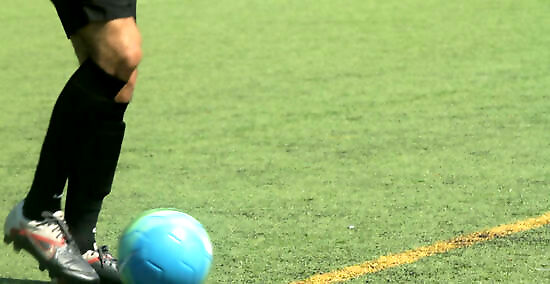
Place the ball at your feet. Take your dominant kicking foot, and place it on top of the ball. Roll your foot down the ball just strong enough to create backspin on the ball. Place your toe underneath the ball, and allow the ball to roll up your foot. Immediately kick the ball straight up, as if you were going to catch it with your hands.
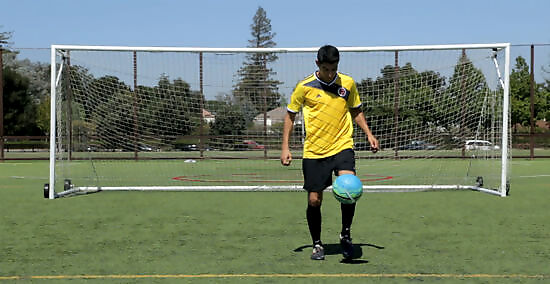
Position yourself so you can kick the ball up with your other foot. Do this as the ball comes back down. Alternate feet and continue to juggle as you learned how to do in the previous section. Every time the ball drops, do not pick it up--use your foot to roll the ball up on your laces and start juggling again.
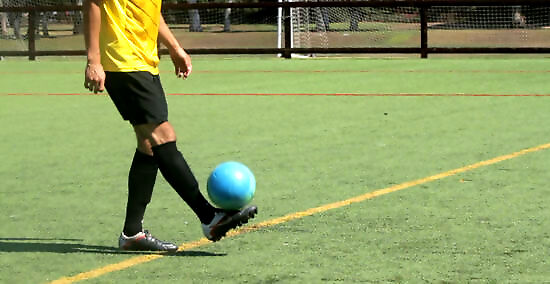
Keep the foot you are kicking with near the ground. Moving your leg up too high while you kick the ball will make you lose control of the ball. The power behind the ball comes from your foot, not from your leg.
Using your Knees
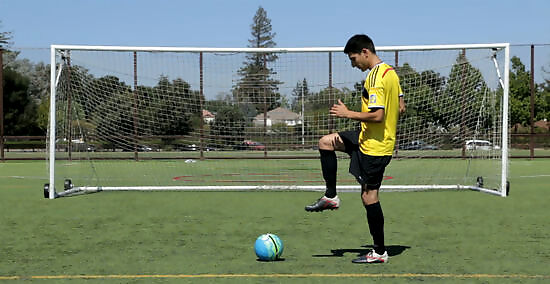
Lift one knee so that it is perpendicular to your body. Doing this will keep your thigh flat. A flat surface is much easier to juggle off of then an angular surface. Try to juggle with your thighs only after you have mastered juggling with your feet. Juggling with your thighs is a way to add versatility to your juggling skills. It will also allow you to keep the ball more in control.
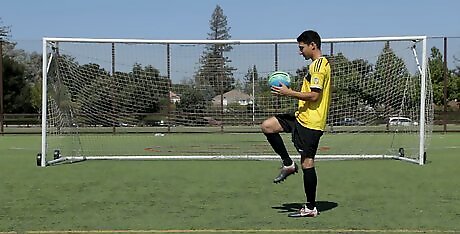
Hold the ball above your thigh. Let the ball drop onto the middle part of your thigh. If you bounce the ball off of your knee, it is almost guaranteed to go flying out of reach.
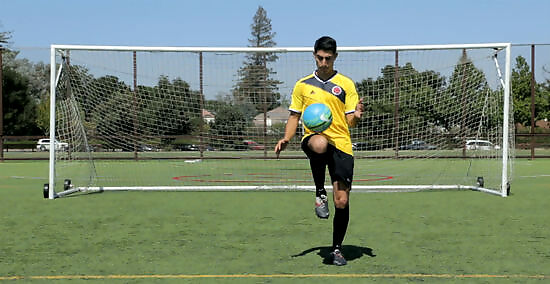
Juggle with your thighs the way you would juggle with your feet. Begin by bouncing the ball off your thigh and catching it. Repeat this process until you are able to control the direction of the ball and how high it goes with your thigh. Switch to the other thigh and repeat the process.
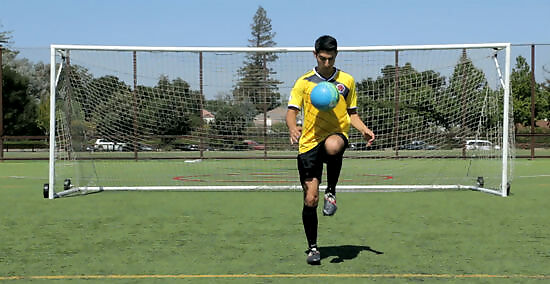
Alternate between thighs. Do this when you feel confident that you can control the ball with both thighs.
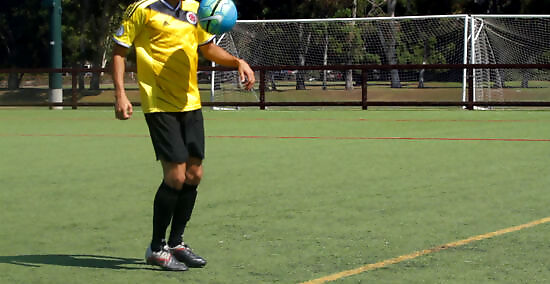
Alternate between your thighs and feet. Try kicking the ball with both feet and then both thighs. When you can do this without dropping the ball, try to bounce the ball off of each foot and thigh twice, then three times, and so on.
Using Other Parts of Your Body
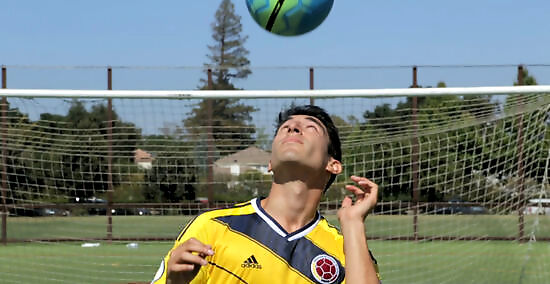
Juggle the ball with your head. Throw or kick the ball above your head and then bounce it off of your forehead. Angle your face up so that the ball will hit on the top of your forehead. Keep your neck relaxed and bend your knees. Bending your knees will help you to stay balanced while you focus on the ball above you. You can use the top of your head to juggle but you will have much less control of the ball. It can also hurt to juggle with the top of your head--try to avoid doing this.
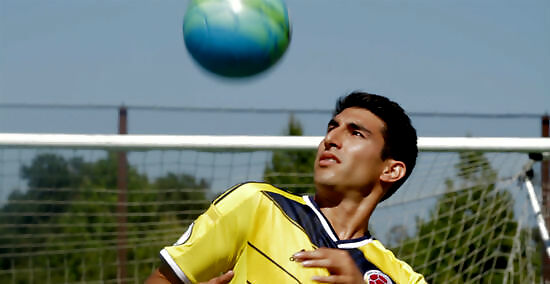
Use your shoulders. While shoulders are hard to juggle with because they are not flat, you can use them to direct the ball where you want it to go. When you kick the ball up to your shoulder, move your shoulder upward and in the direction you would like the ball to go. For instance, you can kick the ball up with your right foot and then hit the ball with your right shoulder so that it arcs over your body and falls so that you can kick the ball up with your left foot. Make sure to only use your shoulders and not your upper arm. Hitting the ball with any part of your arm besides your shoulders is considered a ‘handball’.
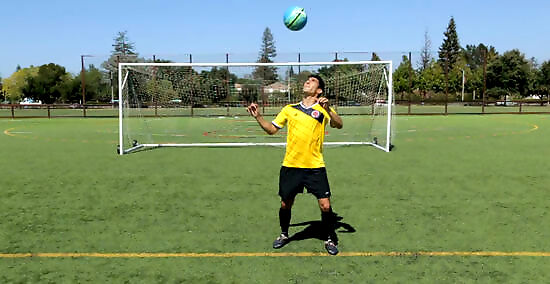
Practice using your head, shoulders, and chest. Use the pattern of foot-chest-thigh-shoulder-head and repeat to get comfortable with using your shoulders and head. Practice these techniques with a friend to create a variety of game-like scenarios. When you feel comfortable with this pattern, switch it up and practice another pattern such as head-chest-foot-shoulder-thigh.




















Comments
0 comment